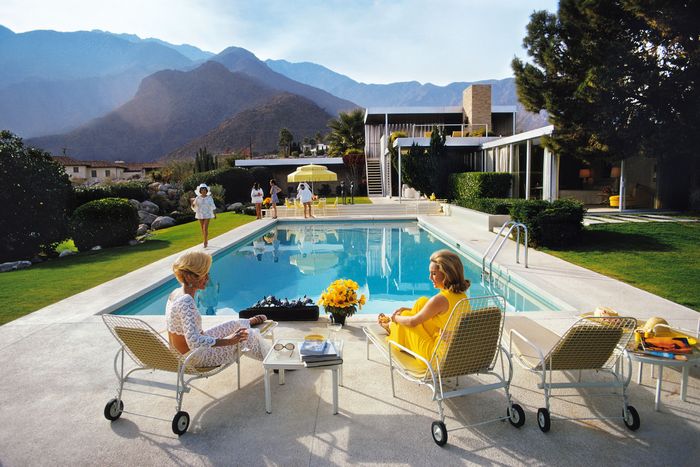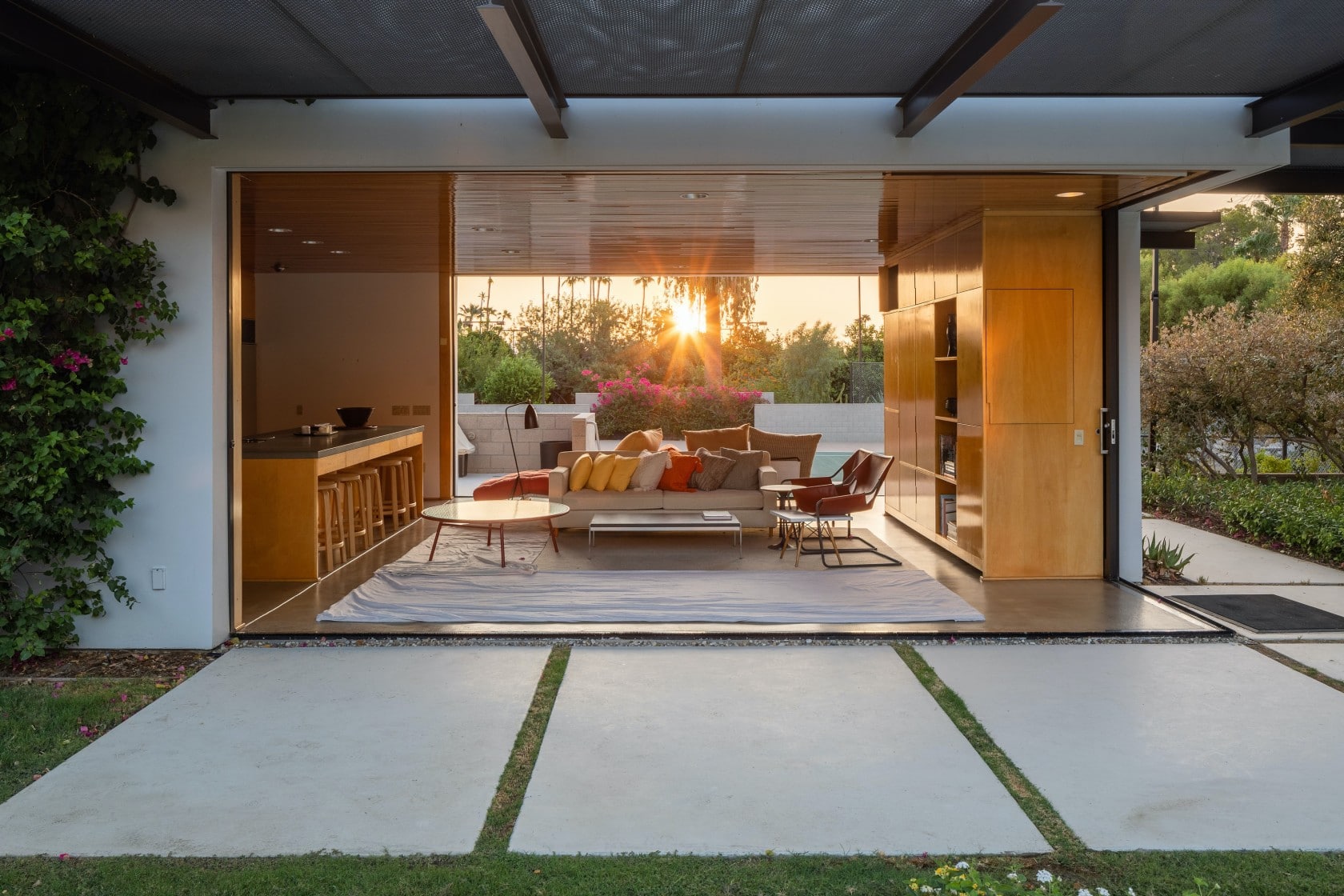Table Of Content
The lounge area, shared with the dining room and more or less square, is at the center of the house. The plan in the form of cross guarantees that the four wings get both daylight and good ventilation. As in his own home, Neutra skillfully dodged the ban on building a second height, eliminating the walls of the roundabout, except for the chimney and the vertical sheets of aluminum.
Palm Springs Modernism Week: Where 1960s Midcentury Architecture Lives On - W Magazine
Palm Springs Modernism Week: Where 1960s Midcentury Architecture Lives On.
Posted: Tue, 21 Feb 2023 08:00:00 GMT [source]
The Dwell House Is a Modern Prefab ADU Delivered to Your Backyard
Additionally, they more than doubled the property size by purchasing several adjacent properties to add to the Kaufmann property and brought it to Neutra’s initial vision. In 1996, it was the twentieth building to be designated as a protected local landmark and is believed to be the first private property to be selected as such. The Kaufmann Desert House was saved in 1992 when it was discovered again by a married couple named Brent and Beth Harris. Brent, an investment banker, and Beth, an architectural historian, found the house was for sale when Beth had snuck onto the property to take a closer look at the historic landmark. The original plans for the property had never been replicated and Neutra had died in 1970, so they went on a journey to restore it back to its original glory. In 2003 Sotheby’s sold the 1951 Farnsworth House southwest of Chicago, designed by Mies van der Rohe, at auction for $7.5 million.
For a Cool $25 Million, You Can Buy Richard Neutra’s Most Famous Palm Springs Home
Inside the Rebirth of the Neutra Institute for Survival Through Design - Architectural Digest
Inside the Rebirth of the Neutra Institute for Survival Through Design.
Posted: Thu, 16 Apr 2020 07:00:00 GMT [source]
Albert Frey, patron of Le Corbusier, had built his house here in 1940 and in 1937 completed the tiny House of Millar Neutra. Julius Shulman's photographs played an important role in establishing the Kaufmann residence as one of the nation's most iconic modernist houses. Upon completion of the Kaufmann house, Neutra gave Shulman explicit instructions about how he wished the building to be photographed, suggesting dusk and evening shots that looked back into the illuminated interior.
AD 经典:考夫曼住宅 / Richard Neutra
Even designed with right angles, the forms of the house are very smooth; yet the severe winds of northeast Palm Springs still blow everything they can get a hold of, despite improvements to the walls and blinds. The large sliding windows, whose bronze-colored blinds alleviated the silvery glow of the house, lead to an open, adjacent courtyard in the living room and in the master bedroom, open to the pool. Although one wing of the house sits on an east-west axis, the other sits perpendicular or to the cardinal directions to expand the areas of residence. Without the original plans for the house, the Harrises dug through the Neutra archives at the University of California, Los Angeles, looking at hundreds of Neutra’s sketches of details for the house. They persuaded Mr. Shulman to let them examine dozens of never-printed photographs of the home’s interior, and found other documents in the architectural collections at Columbia University.
Eight home interiors where mezzanines maximise usable space
As photography became more available, magazines, publications, and printed media became the primary way people would consume architecture. This allowed home inhabitants to walk from the interior to the exterior without sensing a temperature change on the floor. They would feel as though they were on the same surface even after crossing the glass line and over to the exterior hardscape slab. Department store owner Edgar Kaufmann – who had previously commissioned Frank Lloyd Wright to design what is now known as Falling Water – decided to hire Richard Neutra in 1946 to create a vacation home in Palm Springs. Although Kaufmann was still a fan of Wright, he was looking for a space with a lighter vibe, and Neutra certainly delivered.

About Kaufmann House design and construction.
The tour was fascinating in its detail, but Beth's personal recollections left the most lasting impression. Even before my first visit to Palm Springs, the building I most wanted to see was Richard Neutra's Edgar Kaufmann Residence. I knew the 1947 photos of the house by architectural photographer Julius Shulman which are among most famous and widely known architectural images of all time. Architectural historian John Crosse assembled an 82-page bibliography citing over 150 published articles on the house (most accompanied by Shulman photos) beginning with the house's completion through Neutra's death in 1970. But the house settled into obscurity with only 70 articles published about it after 1970 until the house was purchased and restored by Beth and Brent Harris in 1993.
View all galleries in Historical Architectures
If walking the rich through Palm Springs’ most exclusive house is a privilege, it is also wistful. The Harrises, who reportedly share the house on alternating weekends, may not be happy about parting with the house they have done so much to preserve. • Neutra did dig the foundations and managed to leave just before they were ordered to halt construction as a result of shortages of materials during the war.

Neutra created another outdoor seating area by placing a lookout pavilion above the living area of the otherwise one-story building. The pavilion’s western and northern sides are lined with the same aluminum louvers as used below, while the other two sides are left open. Neutra named this elevated room a “gloriette,” a northern European Baroque term that denotes an elevated pavilion offering views of a garden or a landscape. The house was originally captured in the black-and white images of american architectural photographer julius shulman. In 1970, slim aarons chose it as the setting for his iconic photograph ‘poolside gossip’, depicting california society women by the pool. Regarded among the most important houses of the 20th century, the kaufmann house is currently up for sale via gerard bisignano of vista sotheby’s international realty for $25m.
In the west wing there is a kitchen, service spaces and rooms for staff which can be reached by a deck “breezway”. The desert, or rather, this primordial wilderness area that stretches around Palm Springs, fascinated Neutra. His 1927 book “Wie Baute Amerika” ends with images of houses of the Indian peoples of New Mexico and Arizona, praising their overlapping rooms, with terraces on the roof and the ability of mud brick to withstand inclement weather.
The layout includes five bedrooms and five bathrooms, with a grassy backyard and pool overlooking the San Jacinto Mountains to the west. The house’s swimming pool is one of the most iconic and recognizable aspects of the Kaufmann House; however, it is not solely a photographic gem or simply a recreational feature. The house alone is unbalanced and heavy as the wings are not equally proportioned, but with the addition and placement of the swimming pool there is a cohesive balance and harmony throughout the design. Best known for his eponymous Pittsburgh department store, Kaufmann revered good design.
Doe can hardly blame the enthusiasts, even those who, in the current downturn in the housing market, can barely afford their own houses, much less the former vacation house of Pittsburgh department store magnate Edgar J. Kaufmann. The much-photographed 1946 masterwork by architect Richard Neutra might be the happiest marriage of the abstract geometry of modern architecture with the desert-and-mountain landscape of Palm Springs. Kaufmann, a notorious womanizer, completed the desert house as his marriage disintegrated. In the early 1950's, Liliane Kaufmann commissioned Wright to design another house in Palm Springs on the north side of the property where the Neutra house sits. Named "Boulder House," as confirmed by Edgar Kaufmann Jr. in his book "Fallingwater Rising" this commission was to be a home for Liliane Kaufmann who could no longer live with her philandering husband. It is said that Wright put both Edgar and Lilianne's names on the rendering in a vain attempt to regain Edgar's patronage.
The same retail baron commissioned Frank Lloyd Wright to build Fallingwater in Mill Run, Pennsylvania, a decade earlier. The Harrises purchased the home for US$1.5 million, then sought to restore the home to its original design. Neutra died in 1970 and the original plans were not available, so the couple brought in Los Angeles architects Leo Marmol and Ron Radziner to restore the design. They were able to obtain pieces from the original suppliers of paint and fixtures; and they purchased a metal-crimping machine to reproduce the sheet-metal fascia that lined the roof.
Wright was very offended at his choice, but Kaufmann was looking for something that fit his new desert landscape and felt Neutra would be a stronger choice. A decade earlier he employed well-known architect Frank Lloyd Wright to build his Pittsburgh home known as Fallingwater. The pending sale is bittersweet for the current owners, who said they planned to give a portion of the proceeds to preservation groups. Asked how it felt to be close to selling the property, Dr. Harris looked back at the house, blinking away tears. In 1996, the house was designated a historic site by the Palm Springs Historic Site Preservation Board. It remains a private residence, but nonetheless features as a stop on architecture tours of the city, when it can be glimpsed from the street.
The Harrises went with Christies who put a pre-auction estimate for the house at $15-25 Million. The Kaufmann desert house received a final bid of $15 million, but the sale was not completed due to a breach of terms by the buyer. The south wing comprises two covered walkways separated by a massive stone wall, while another open path leads north past a patio to a pair of guest bedrooms. Large sliding glass doors open onto patios that are lined with vertical, moveable metal fins. These slats enable the rooms to be shaded and cooled during extreme heatwaves, and closed up during sandstorms. The Kaufmann House was built by Austrian-born architect Richard Neutra for Edgar J Kaufmann – an American department store entrepreneur – as a vacation residence away from his Pittsburgh home.

No comments:
Post a Comment